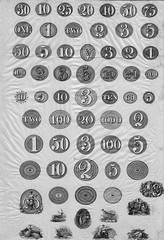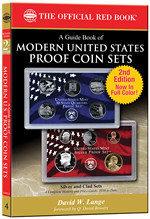
PREV ARTICLE
NEXT ARTICLE
FULL ISSUE
PREV FULL ISSUE
NOTES FROM E-SYLUM READERS: AUGUST 29, 2010Alan Luedeking writes: In the Vernon medals review Dick Johnson asked about the meaning of the "(h)" after Dr. Fernando Chao's name. John Adams mentioned "it means 'junior' -- for the word in Spanish." This is correct, however, the exact meaning of the "(h)" is "hijo" or son, meaning 'junior' in the American English equivalent. Joe Boling writes: About the FedEx loss of five coins ten years ago, I can report that registered mail entering the US through JFK is being rifled or stolen. I currently have two claims in process for rifled or never-delivered mail coming in from Europe. Linn's Stamp News has also reported loss of registered mail coming through JFK. In my opinion, it's better to use regular mail than to call attention to the potential value of a mailpiece by registering it. You can recover only $45.62 in value in international registered mail, unless you have independent insurance. A couple of years ago, the USPS stopped hand-to-hand accountability of international registered mail. Now when a registered piece from overseas enters the US mailstream, it is treated just like any other form of accountable mail - it is accounted for only upon delivery, and if it never arrives at the delivery address, nobody has a clue about where it went astray. That is certainly NOT the service that a consumer thinks is being pu rchased by using registered mail. And the Postal Service can't understand why it is losing business? To read the earlier E-Sylum article, see: DEALER FENTON RECOVERS COIN STOLEN TEN YEARS AGO (www.coinbooks.org/esylum_v13n34a26.html) In the Yahoo Colonial Coins group this week, Ray Williams asked: I remember when I was young... my Mom had a fur coat. She used to have someone pick it up every Spring to put into "cold storage" for the Summer. I assume this was for preservation. I recently purchased a beautiful Beaver Pelt, a major export of our colonial times, for use in talks & presentations. Are there any suggestions for keeping it in good condition? I don't want to pay for cold storage, if it exists any more. Put it in plastic and store in the freezer? Dark corner of the basement? Any thoughts are appreciated.
Hmmm. Storing Odd and Curious money is often more a question of space than preservation. But how does one store a beaver pelt? Regardless, kudos to Ray for picking one up for educational purposes.
-Editor
Ron Guth writes: Another free photo editor is Paint.net. It is very powerful and easy to learn. I use it every day to manage images for PCGS CoinFacts. John Sallay writes: I just got back from The Netherlands. While in Haarlem I got to see the numismatic room of the Teylers Museum – AWESOME, and then saw a few cases of nice gold medals in the Van Loon house museum in Amsterdam. I understand that there is also a very good numismatic collection in Leiden, but I didn't have a chance to stop there on this trip. Andrew Hurle of Australia writes: Just thought to clarify that those De La Rue patents were English patents, not American. As far as I know they aren't the subject of any existing research so haven't links to provide but I'm happy to send anyone a copy of the patent documents if they wish to follow up. To read the earlier E-Sylum article, see: BANKNOTE FIRM PATENTED GERMICIDAL AND RADIOACTIVE PAPER (www.coinbooks.org/esylum_v13n34a13.html) Andrews:
To read the earlier E-Sylum article, see: GROUSE HUNTING SEASON: MORE ON AUDUBON'S FIRST ENGRAVED ILLUSTRATION (www.coinbooks.org/esylum_v13n33a11.html) Regarding the previous week's issue, Joe Boling writes:
To read the earlier E-Sylum article, see: BOOK REVIEW: MODERN UNITED STATES PROOF COIN SETS, SECOND EDITION (www.coinbooks.org/esylum_v13n33a04.html) Joe adds: About the Tensho oban gifted by the "city" of Toyokoro, Japan, to the "sister city" of Summerland, BC: Toyokoro is an agricultural town of fewer than 5000 residents in southeastern Hokkaido. Summerland is a bit larger, at 11,000, in southeastern BC. I sincerely doubt that the oban is an original, which would have a market value starting at about $150,000.
To read the earlier E-Sylum article, see:
TOYOKORO, JAPAN GIVES GOLD OBAN COIN TO SISTER CITY
(www.coinbooks.org/esylum_v13n33a17.html)
The Numismatic Bibliomania Society is a non-profit organization promoting numismatic literature. See our web site at coinbooks.org. To submit items for publication in The E-Sylum, write to the Editor at this address: whomren@gmail.com To subscribe go to: https://my.binhost.com/lists/listinfo/esylum All Rights Reserved. NBS Home Page Contact the NBS webmaster 
|

